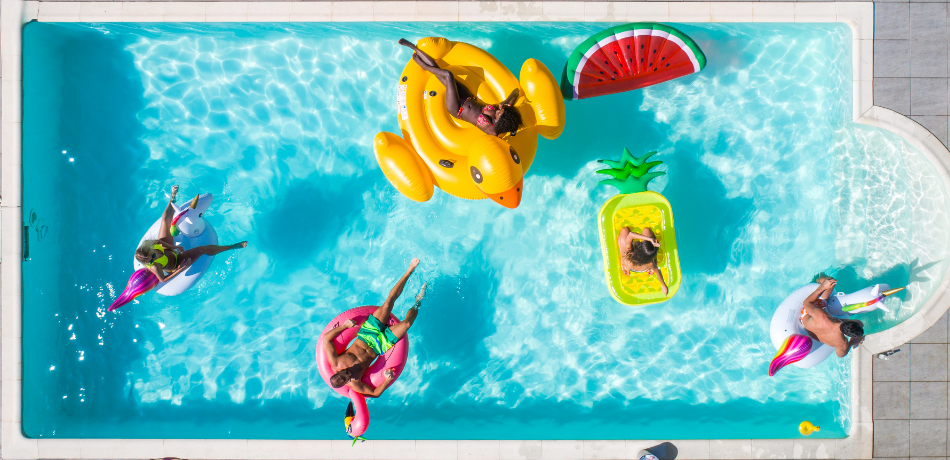Spring has finally sprung and warm weather is here to stay. Though some of us in Charleston don’t fully winterize our pools, we probably don’t regularly maintain them throughout the colder months. Dirty pools with improper chemical balances could contain bacteria and other pathogens and irritants that could harm your eyes and skin and even cause infections.
When it’s time to jump back into your pool for the swimming season, you should make sure it’s ready to go by following this pool maintenance guide.
Draining and Cleaning
First thing’s first: you should never fully drain your fiberglass pool. Removing the pressure of the water could cause damage to the fiberglass shell. However, once a year we advise dropping the water level 6 inches to allow for cleaning and prepping the walls at the water line. Before you drain, make sure to contact us first to follow the proper procedures or request help.
Once you’ve lowered the water level by 6 inches, use a non-abrasive cleaner like 409 and a soft sponge to clean up any stains and scum. Do not use abrasive cleaners like Comet or Ajax, and do not use any steel wool or other scouring pads. These will damage the gelcoat that prevents algae and bacteria buildup.
Once you’ve cleaned the walls, apply a layer of good-quality auto wax to the walls at and above the water line to protect them throughout the season. Once you’ve allowed the wax to set, refill your pool to the proper water level.
Skimming, Vacuuming and Checking the Filters
Once you’ve cleaned the walls, the next step in prepping your pool is making sure it’s free of dirt and debris. Use a skimmer on a telescoping pole to skim the surface of sticks, leaves and bugs. Once you’ve skimmed the surface, use your pool vacuum to clean the bottom of your pool of any dirt and grime.
Also be sure to make sure the skimmer basket and pump baskets are clean. If you have a sand filter, backwash it by following the manufacturer instructions for your filtration system. You should check your filters as part of your weekly maintenance routine throughout the swimming season.
Chemical Balancing
Though fiberglass pools are low maintenance compared to other types of inground pools, you still need to maintain proper chemical levels. Using the right chemical treatments in the right amounts is essential for your own swimming safety and extending the life of your fiberglass pool. Typically, proper chemical balances are as follows:
- pH level:2–7.6
- Alkalinity: 80–120 ppm
- Chlorine residual:0–3.0 ppm
- Calcium hardness: 200 – 400 ppm
- Cyanuric acid: 30–60 ppm
- Metals: 0 ppm
Alaglas pools use small amounts of chemicals to keep everything in check. You really only need the following chemicals:
- Baking soda to maintain pH and alkalinity
- Shock treatment to quickly bring chlorine levels to the proper measure
- 3” chlorine tablets (not powder) with a floating dispenser to maintain proper chlorine levels
- Water clarifier to clear up cloudy water
Follow manufacturer instructions for all chemicals, and be sure to check your levels each week. Do not fight your pool. The chemical balance will fluctuate naturally between hot, sunny days, rainy days and cool nights. Record the before and after chemical levels each week to make sure they’re consistent.
And there you have it! Following this guide will get your pool in working order in no time, and you can keep it in tip-top shape with just a few minutes of maintenance each week. Now it’s time to kick back, relax and enjoy your beautiful, sparkling pool.

